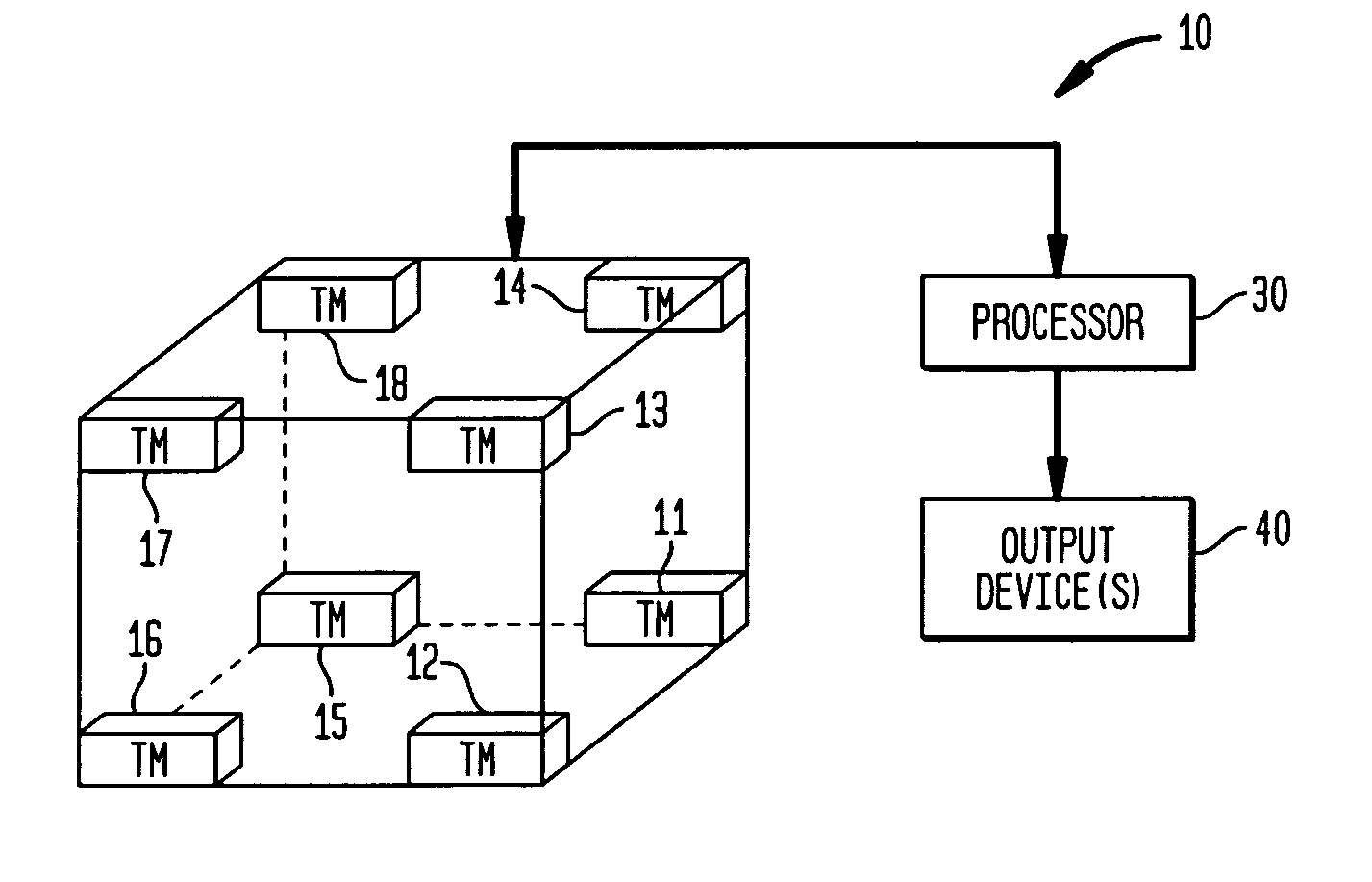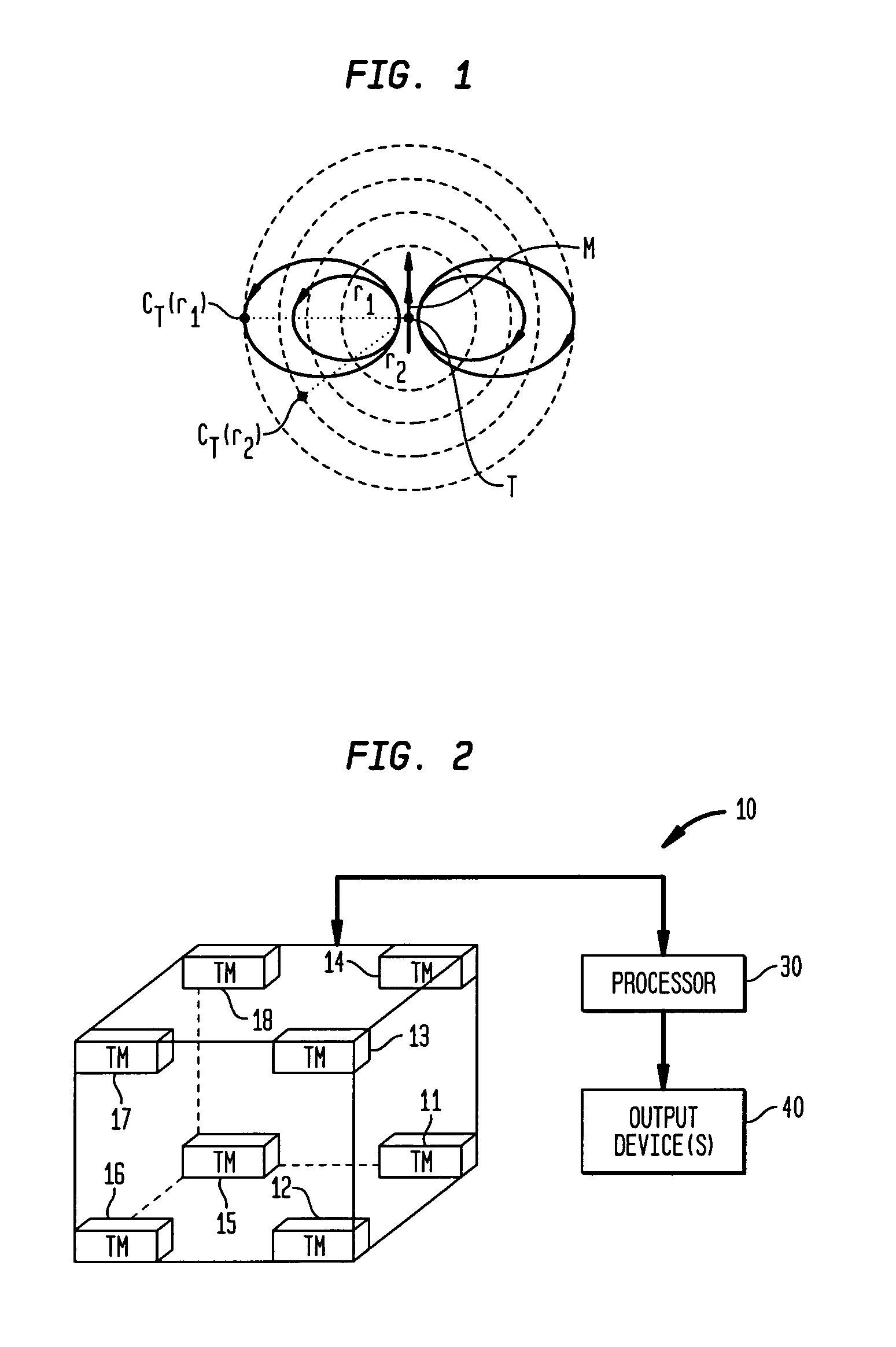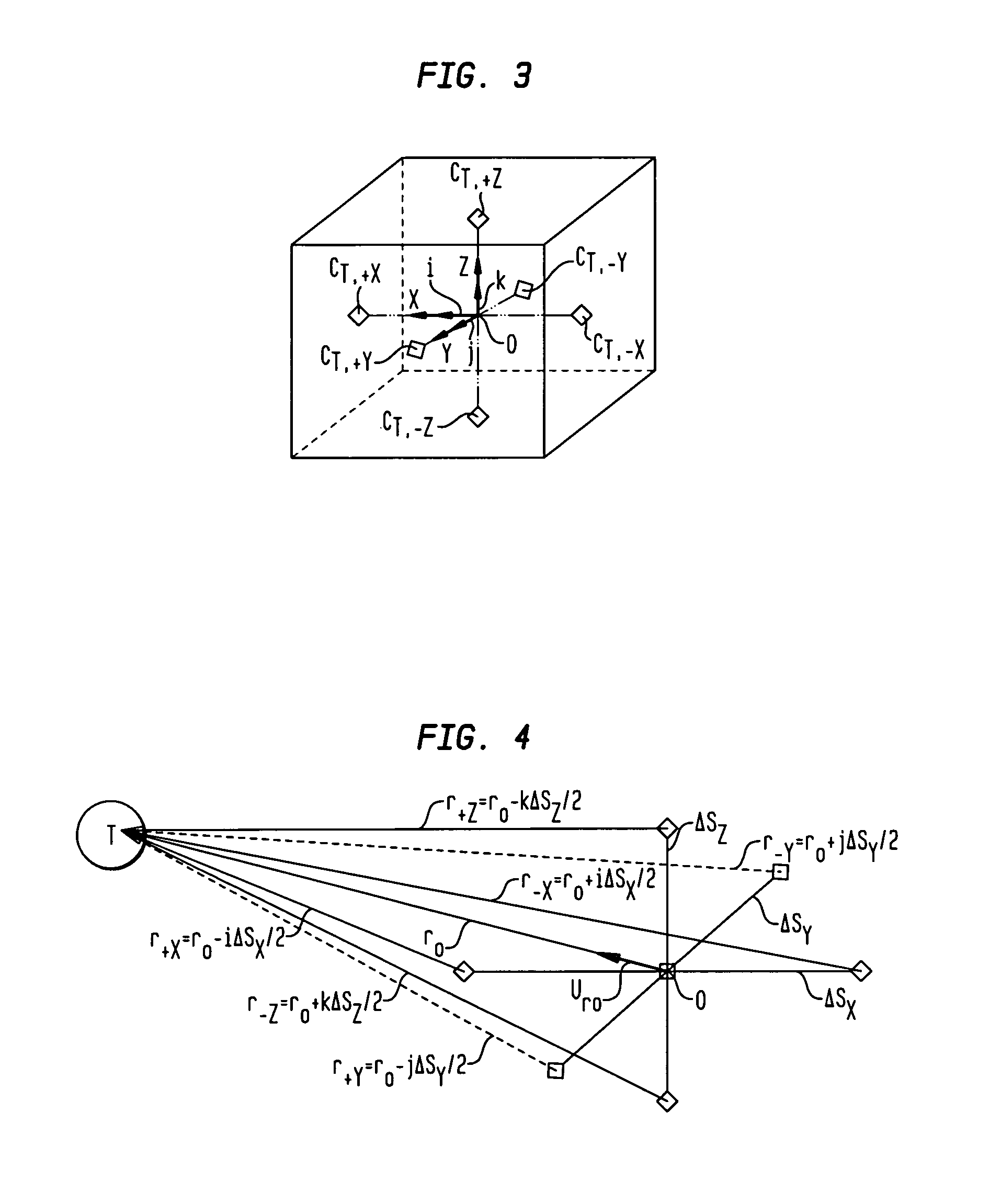Magnetic anomaly sensing system for detection, localization and classification of a magnetic object in a cluttered field of magnetic anomalies
- Summary
- Abstract
- Description
- Claims
- Application Information
AI Technical Summary
Benefits of technology
Problems solved by technology
Method used
Image
Examples
Embodiment Construction
[0041]In general, the present invention is a magnetic anomaly sensing-based system and method for the “detection, localization and classification” (DLC) of stationary and / or moving objects (i.e., “targets”) that have magnetic signatures. The term “target” as used herein refers to any natural or man-made object residing on / under the ground or in the water, with the object having an inherent magnetic signature owing to the ferrous material(s) that are included in the object's physical structure.
[0042]The present invention's new and improved methods of target localization and discrimination exploit the fact that the gradient contraction CT “field” of a magnetic object is mathematically analogous to a central potential field that emanates from the object. The system includes magnetic sensors and a processor that continually determines magnetic gradient tensors associated with the target and converts the magnetic gradient tensors to gradient contraction scalars. The gradient contraction ...
PUM
 Login to View More
Login to View More Abstract
Description
Claims
Application Information
 Login to View More
Login to View More - R&D
- Intellectual Property
- Life Sciences
- Materials
- Tech Scout
- Unparalleled Data Quality
- Higher Quality Content
- 60% Fewer Hallucinations
Browse by: Latest US Patents, China's latest patents, Technical Efficacy Thesaurus, Application Domain, Technology Topic, Popular Technical Reports.
© 2025 PatSnap. All rights reserved.Legal|Privacy policy|Modern Slavery Act Transparency Statement|Sitemap|About US| Contact US: help@patsnap.com



